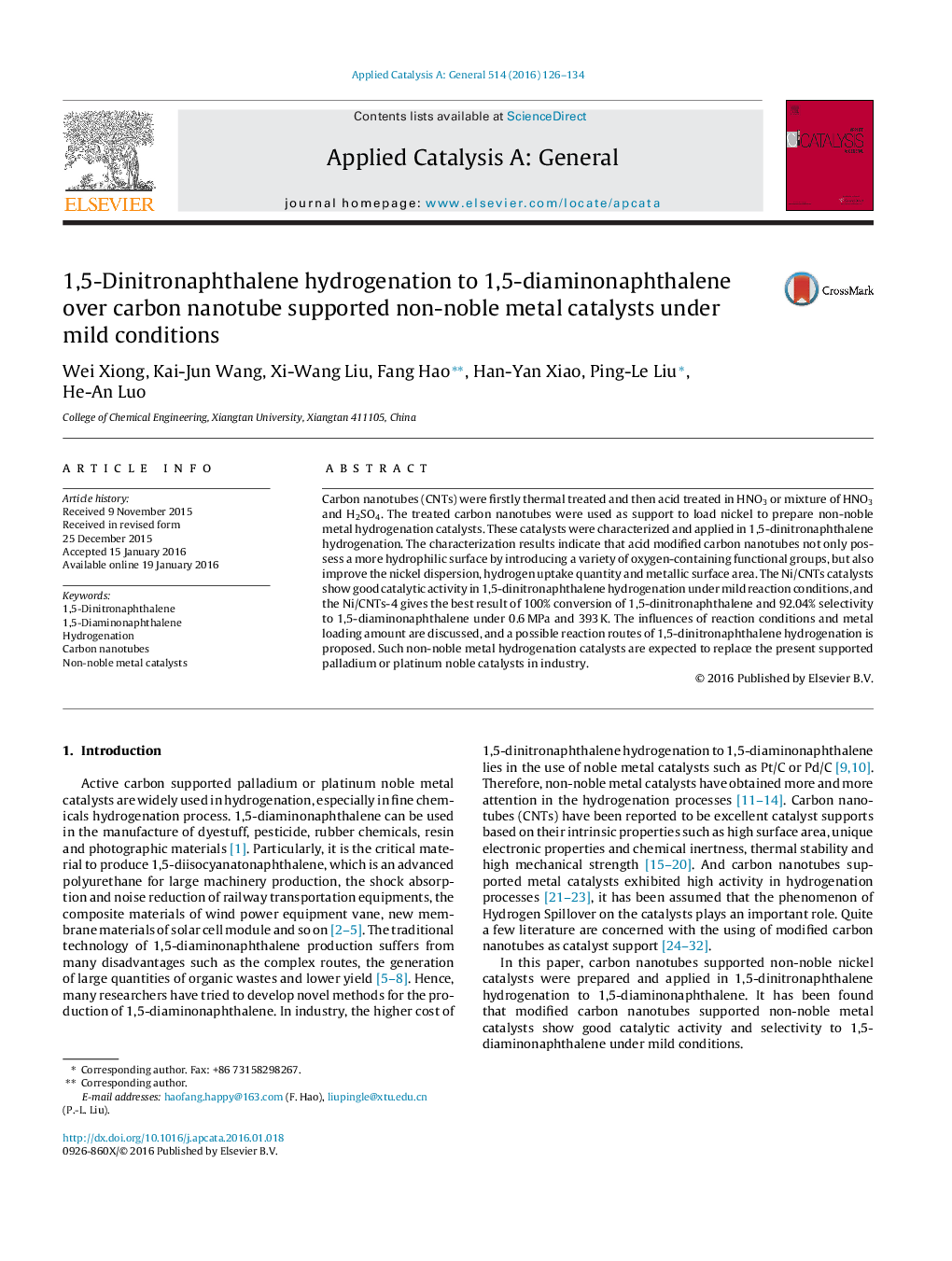| Article ID | Journal | Published Year | Pages | File Type |
|---|---|---|---|---|
| 38948 | Applied Catalysis A: General | 2016 | 9 Pages |
•A new system of 1,5-dinitronaphthalene hydrogenation to 1,5-diaminonaphthalene catalyzed by non-noble metal supported catalysts.•Surface modifications of CNTs improve the catalytic properties effectively.•Non-noble Ni/CNTs gives the best result of 100% conversion of 1,5-dinitronaphthalene and 92.04% selectivity to 1,5-diaminonaphthalene under mild conditions.•Such non-noble metal hydrogenation catalysts are expected to replace the present supported palladium or platinum noble catalysts in industry.
Carbon nanotubes (CNTs) were firstly thermal treated and then acid treated in HNO3 or mixture of HNO3 and H2SO4. The treated carbon nanotubes were used as support to load nickel to prepare non-noble metal hydrogenation catalysts. These catalysts were characterized and applied in 1,5-dinitronaphthalene hydrogenation. The characterization results indicate that acid modified carbon nanotubes not only possess a more hydrophilic surface by introducing a variety of oxygen-containing functional groups, but also improve the nickel dispersion, hydrogen uptake quantity and metallic surface area. The Ni/CNTs catalysts show good catalytic activity in 1,5-dinitronaphthalene hydrogenation under mild reaction conditions, and the Ni/CNTs-4 gives the best result of 100% conversion of 1,5-dinitronaphthalene and 92.04% selectivity to 1,5-diaminonaphthalene under 0.6 MPa and 393 K. The influences of reaction conditions and metal loading amount are discussed, and a possible reaction routes of 1,5-dinitronaphthalene hydrogenation is proposed. Such non-noble metal hydrogenation catalysts are expected to replace the present supported palladium or platinum noble catalysts in industry.
Graphical abstractFigure optionsDownload full-size imageDownload high-quality image (276 K)Download as PowerPoint slide
